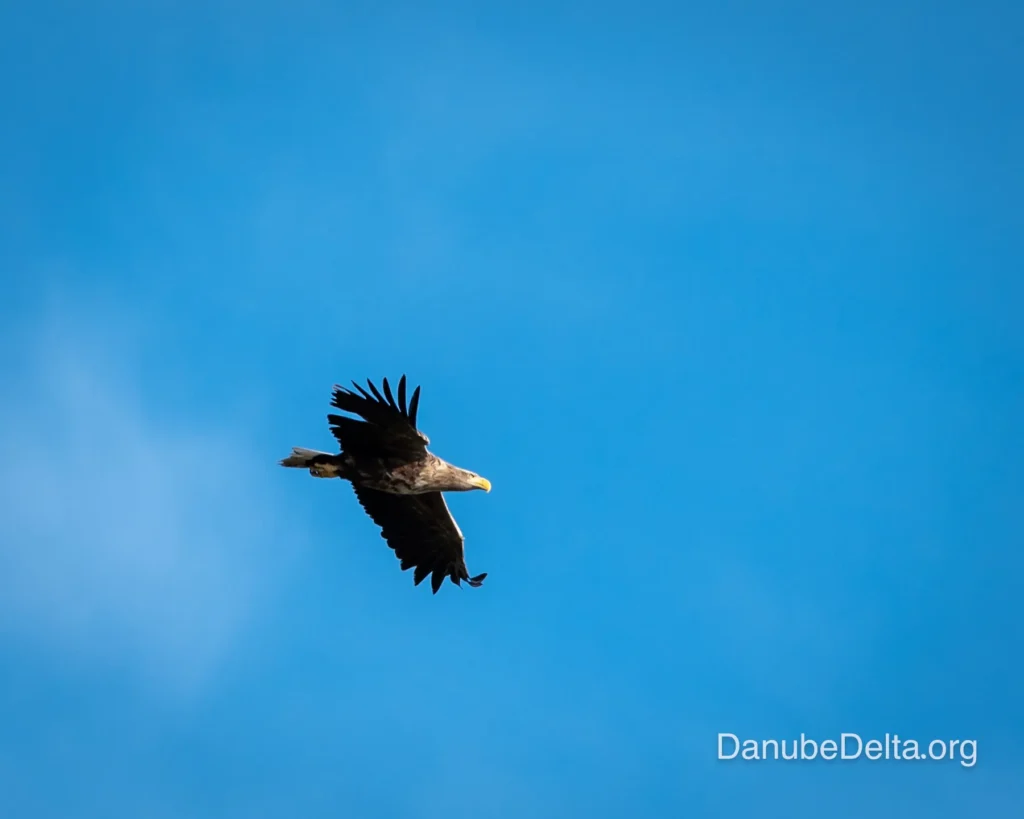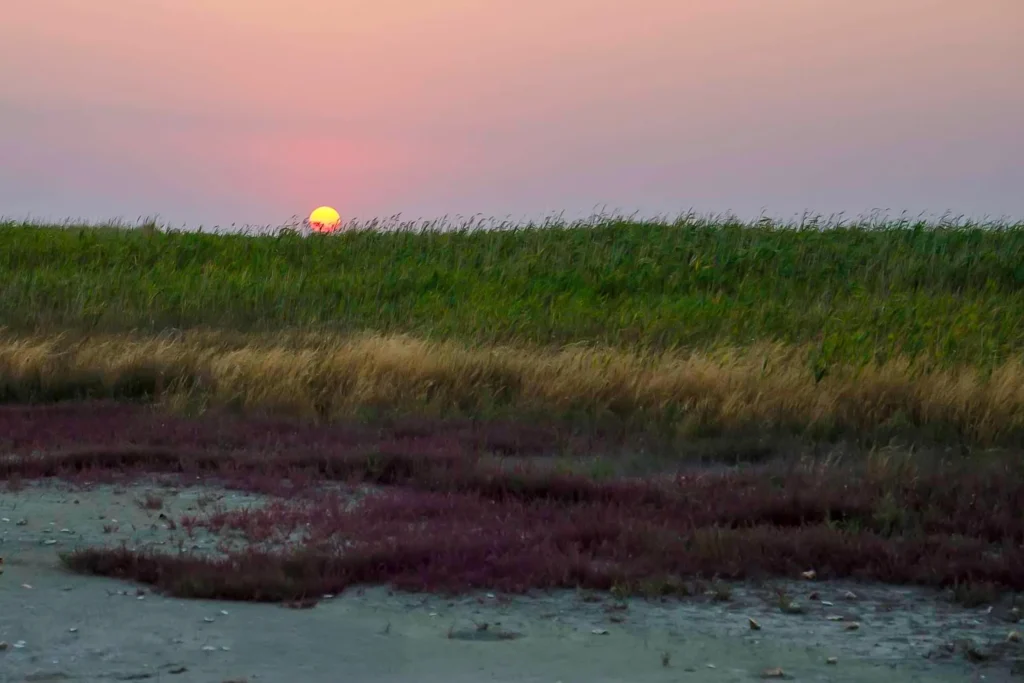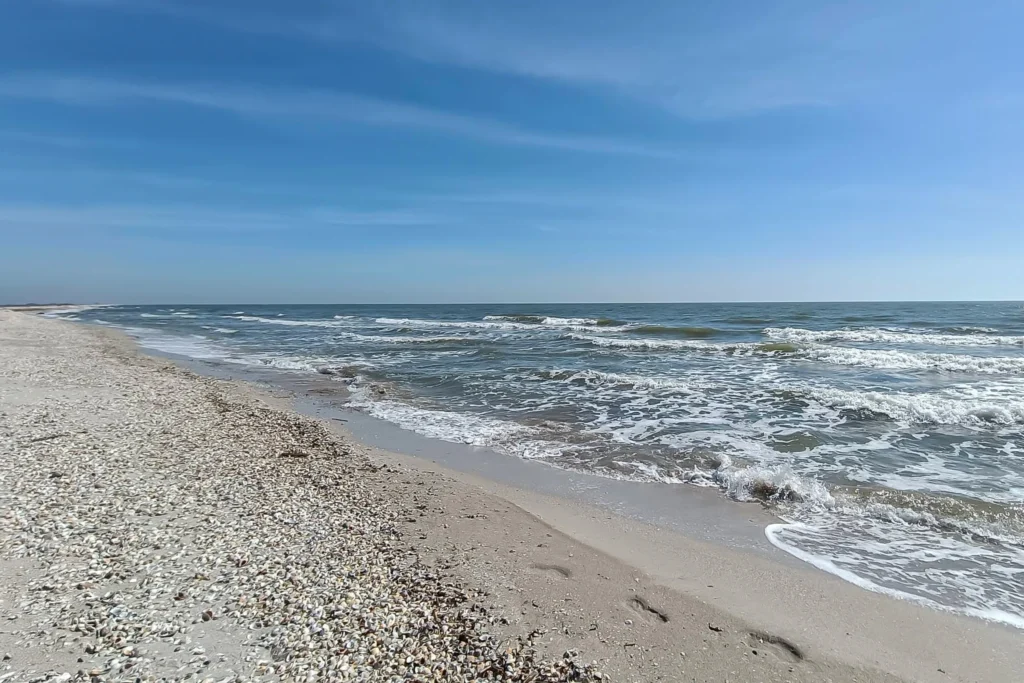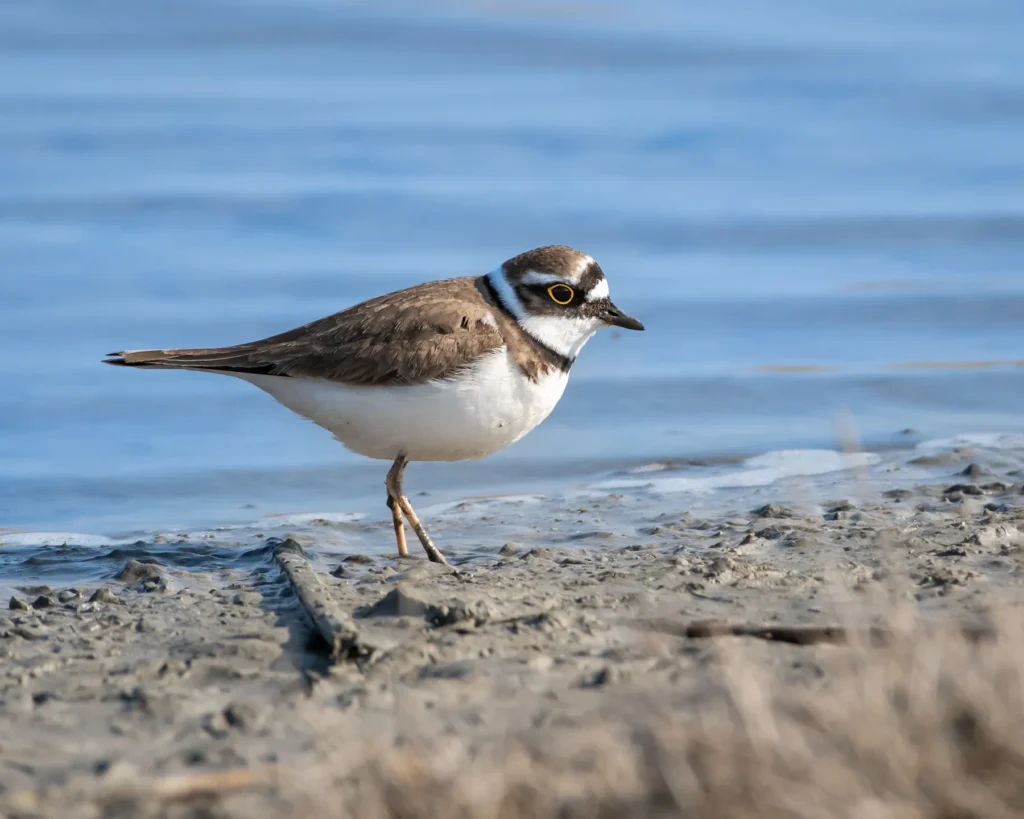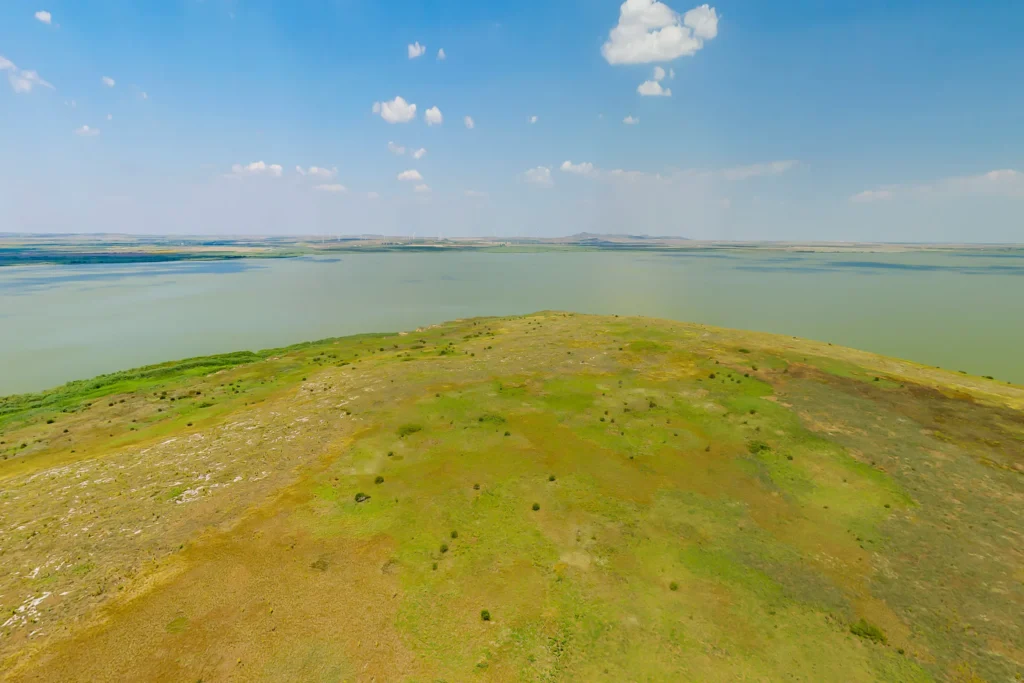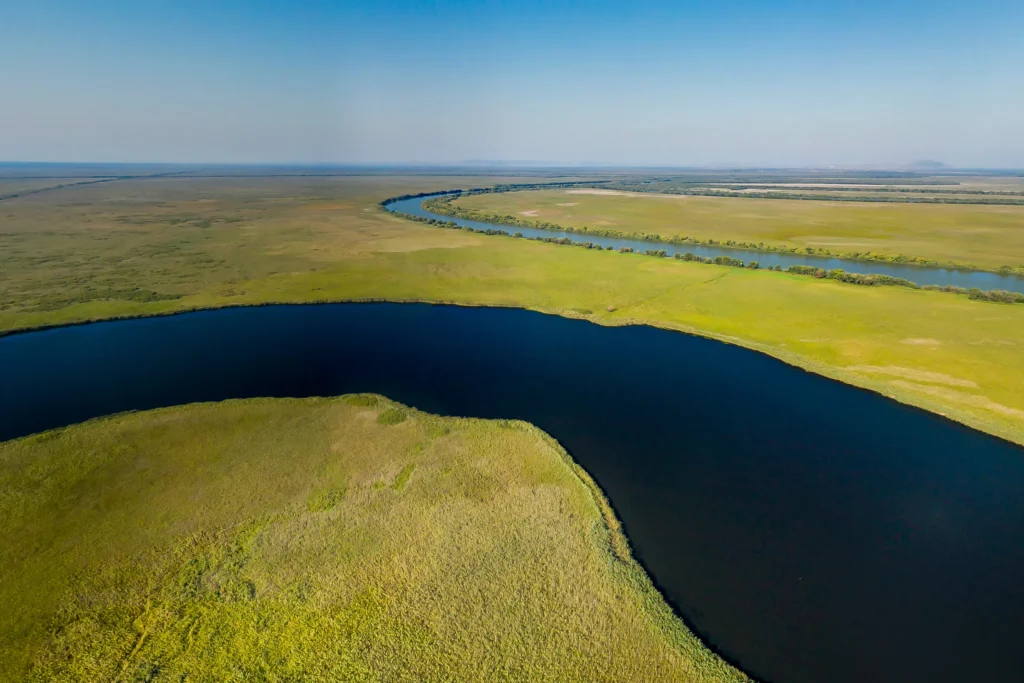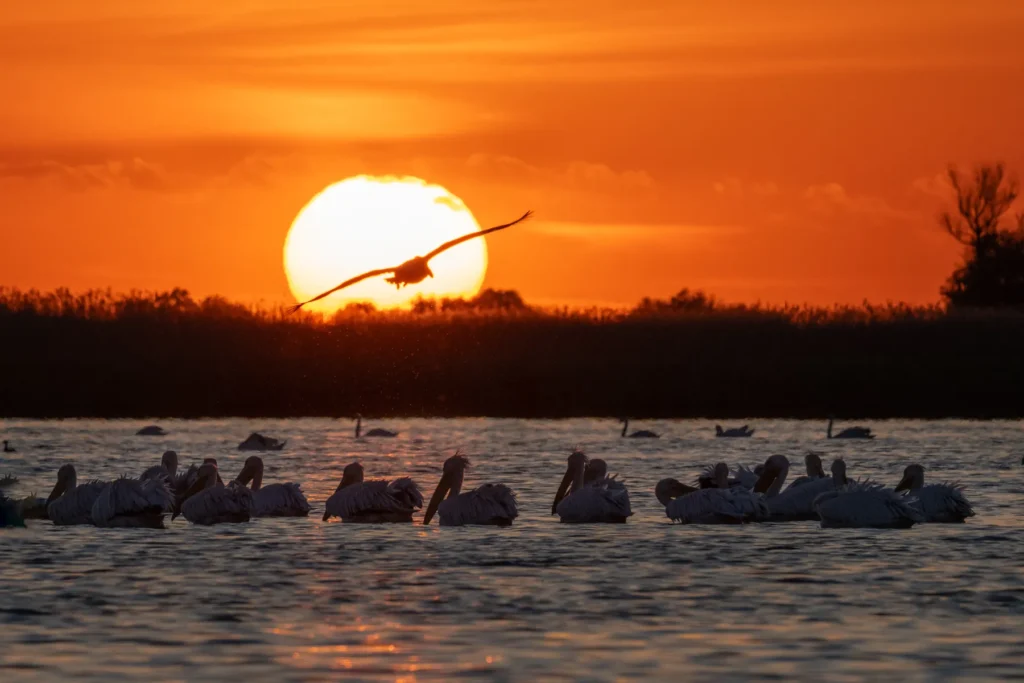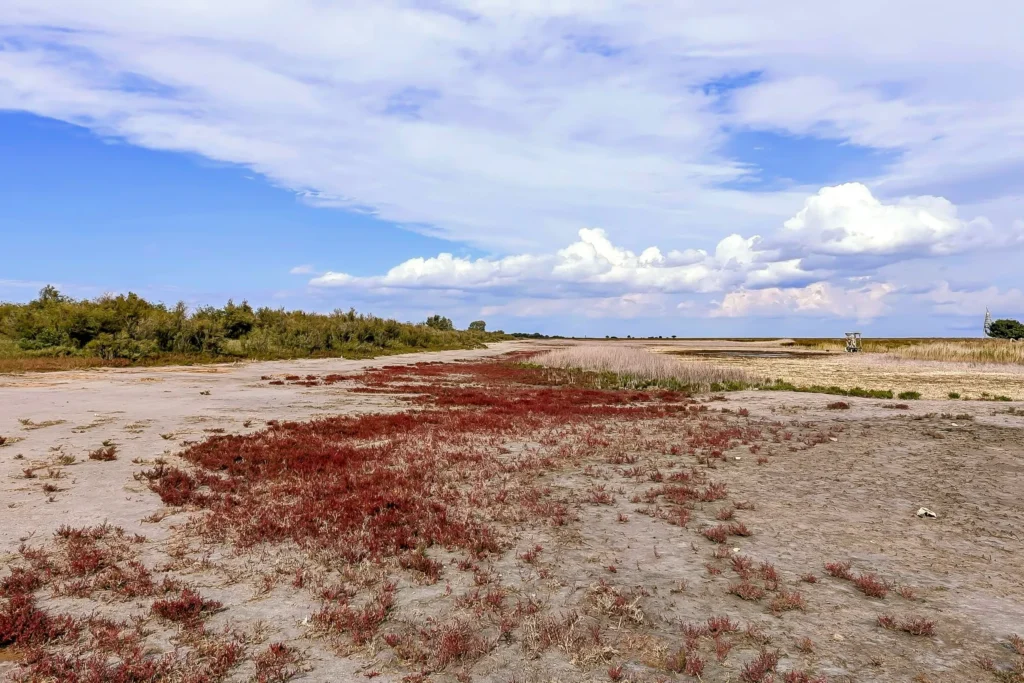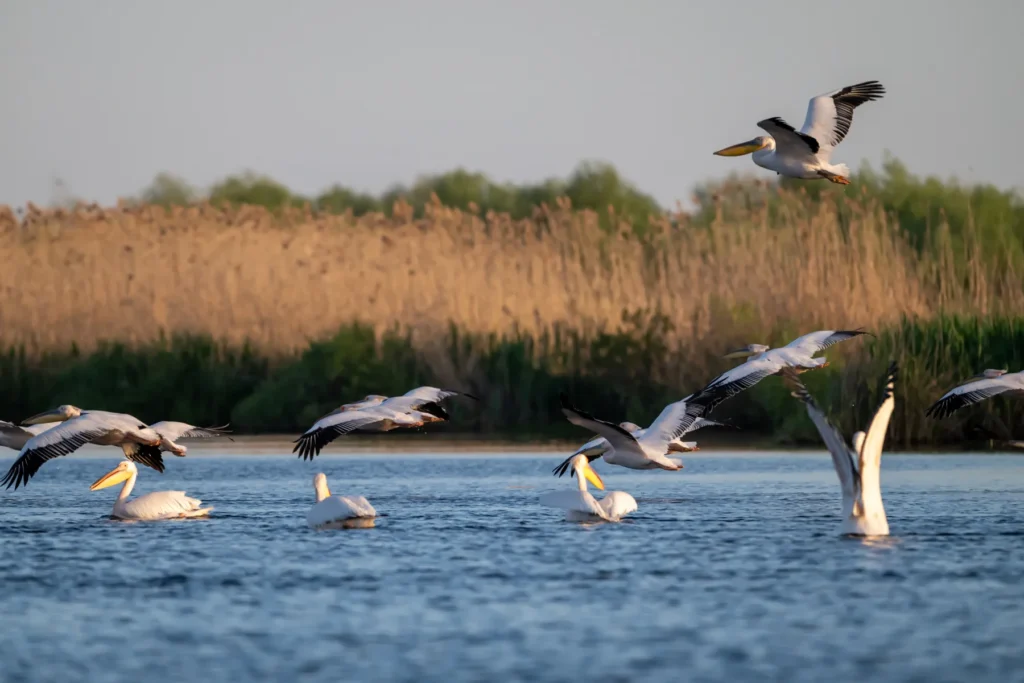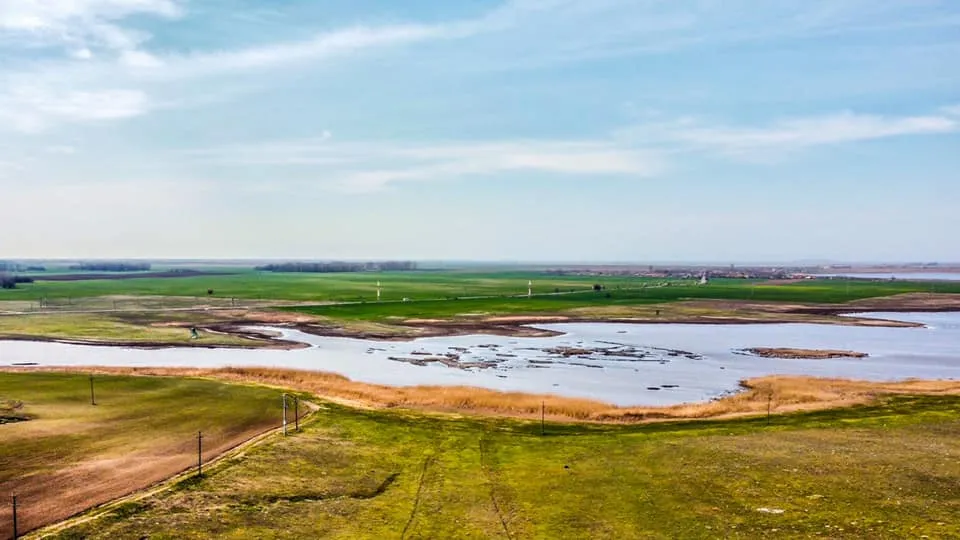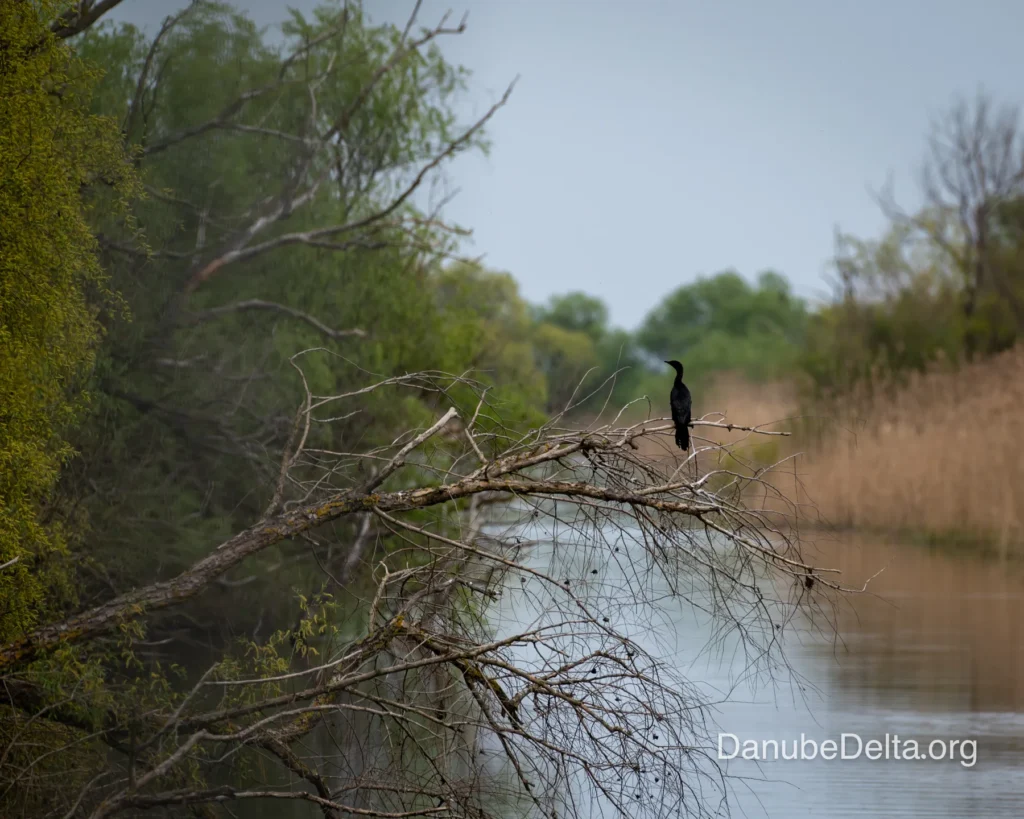Crazy Lake, a strictly protected area in the Danube Delta
Crazy Lake - Danube Delta
Lake Nebunu: A Biodiversity Sanctuary in the Danube Delta. A Detailed Analysis of its Strictly Protected Area Status, Ecological Value and Conservation Rules.
1. Introduction: Conservation Oasis in a Dynamic Ecosystem
Situated in the heart of the Danube Delta Biosphere Reserve (DDBBR), Lake Nebunu is a strictly protected area of national interest, a vital component of the Șontea - Fortuna lake complex. With an area of 115 hectares, this small expanse of water is more than just a geographical presence; it is a fundamental ecological sanctuary, a microcosm of river delta biodiversity. Its role is to provide an essential refuge and optimal conditions for the reproduction and growth of numerous wildlife species, contributing to the resilience of the entire Delta ecosystem.
Crazy Lake
| Feature | Details |
| Surface | 115 ha |
| Localisation | Tulcea county, Pardina commune; in the lake complex Șontea-Fortuna |
| Legal Status | Protected area of national interest, Strict Nature Reserve (Category Ia IUCN) |
| Year of Foundation | 1990, declared in 2000 |
| Normative Act | Law No 5 of 6 March 2000 |
2. Legal Framework and Protective Status
Lake Nebunu is a protected area of national interest, categorised in Category Ia of the International Union for Conservation of Nature (IUCN), which defines it as a strict mixed nature reserve. This legal status, the highest level of protection at international level, emphasises its value for scientific research, protection of ecosystems and species, and the almost total prohibition of any human interference. The main purpose of such an area is to allow natural processes to evolve undisturbed, serving as a reference point for ecological studies.
The reserve was established in 1990, and its status as a protected area was formalised by Law No. 5 of 6 March 2000, published in the Official Journal of Romania. The area is located on the administrative territory of the commune of Pardina, in Tulcea County, and is part of the network of 20 areas with integral protection regime within the RBDD, covering a total area of 50,904 hectares. The regulation stipulates that entry into these areas is allowed only for research and surveillance purposes, as this is the most effective way to prevent environmental destruction and disturbance of plant and animal species.
A seeming contradiction arises when strict protection rules are put side by side with tourist offers promoting trips to Lake Nebunu. Careful analysis of the sources reveals a fundamental distinction. While the regulations categorically prohibit physical access inside the lake, tour operators organise walks on the adjacent navigable routes, such as the Șontea Canal or the Canal Candura, or on the official D1 land route. This approach allows you to visit perimeter of the area, giving tourists the opportunity to observe the beauty of the lake from a distance without disturbing its fragile ecosystem. Entering the water or landing on the lake's own shores remains illegal and is considered one of the main threats to the reserve.
3. Physical and Hydrological Characteristics
Lake Nebunu is situated in the extreme north-central part of Tulcea county, in the north-western part of the Danube Delta, being an integral part of the Sontea-Fortuna lake complex. Its geographical coordinates are 45°15′46″N and 28°59′28″E. The natural area is bounded to the south by the Șontea Gorge and by the lake boundaries to the west, north and east, which gives it a high degree of isolation.
A defining feature of the lake is its ability to host specific biocenoses adapted to "high amplitudes of the flood wave". This adaptation to the variable hydrological regime of the river delta maintains a dynamic but balanced environment. Due to its isolation, the lake functions as a stable, shallow environment, ideal for fish spawning and bird nesting.
The isolation of the lake from heavily trafficked main channels, such as the Danube inlets, is a key factor in its ecological status. This undisturbed environment becomes an ideal breeding ground for fish species that would not be able to survive anthropogenic pressure in more accessible areas. Thus, Lake Nebunu is not just a collection of species, but a vital "nursery" for the recovery of the fish fauna of the entire ecosystem. Its isolation is not just a passive geographical feature, but an active conservation tool, contributing fundamentally to the ecological resilience of the area.
4. Ecological Value and Biodiversity
Lake Nebunu is recognised for its crucial role in maintaining local biodiversity, acting as a vital breeding and nursery habitat for a variety of wildlife.
Ichthyofauna
Due to its remoteness and shallow depth, the lake offers optimal breeding and rearing conditions for the ichthyofauna specific to shallow lakes. Among the fish species listed as being present are lynx (
Tin Tin Tin), sleep (Silurus glanis), eel (Misgurnus fossilis), caracuda (Carassius carassius), carp (Cyprinus carpio), the wriggle (Cobitis taenia) and European perch (Perch fluviatilisThe presence of these species, along with a rich and protected ichthyofauna, emphasises the importance of the lake as a genetic reservoir and a refuge from outside pressures, contributing to the health of the region's fish populations.
Birdlife
The lake provides good nesting conditions for anatids (families of ducks, geese and swans) and provides a food source for waders (shorebirds) in the summer months. Nesting colonies form among the willow branches on the banks, harbouring a variety of species. Birds that find refuge and food in the area include ducks, egrets, swans, swans, cormorants and a range of other water birds. More specifically, reports mention the presence of red-backed heron, gypsy heron, yellow heron, grey heron, red-backed night heron, little grebe, little cormorant and little cormorant.
One notable aspect that requires clarification is the status of pelicans. Although some tour operators mention that Lake Nebunu "hide[s] colonies of pelicans", a comparative analysis with other scientific sources indicates a different situation. The main pelican colonies, both common (
Pelecanus onocrotalus) and Cretans (Pelecanus crispus - Dalmatian pelican) are found in other strictly protected areas, such as the Rosca-Buhaiova complex or Sacalin Island. Pelicans may occasionally transit or forage in the lake area, but there is no substantial evidence that this is a major nesting site. Such clarification is crucial to ensure accurate and scientific information, moving away from mere tourist attractions. The real value of Lake Nebunu lies in its essential role for a wide range of other species, not in the unconfirmed presence of pelican colonies.
Table 2: Fauna Species Characteristic of Lake Nebunu
| Species | Scientific Name | Tip | Ecological Role |
| Crap | Cyprinus carpio | Fish | Reproduction, growth |
| Lin | Tin Tin Tin | Fish | Reproduction, growth |
| Sleep | Silurus glanis | Fish | Reproduction, growth |
| Caracuda | Carassius carassius | Fish | Reproduction, growth |
| Red heron | Unspecified | Bird | Livestock, food |
| Little cormorant | Unspecified | Bird | Livestock, food |
| Lișiță | Unspecified | Bird | Livestock, food |
| Anatidae (ducks, swans) | Unspecified | Birds | Livestock, food |
| Worm farms | Unspecified | Birds | Food (summer months) |
5. Pressures, Threats and Vulnerabilities
Despite its strictly protected status, Lake Nebunu faces a number of threats and vulnerabilities. Sources indicate constant anthropogenic pressures, mainly due to non-compliance with regulations. Specific threats include illegal entry into the area by "tour operators" and fishermen, particularly in spring when water levels are high. The use of motorboats in the lake, as well as reed burning, are other major risks that can disturb wildlife and destroy habitats.
A significant case study highlighted in the environmental reports of the Administration of the Danube Delta Biosphere Reserve (ARBDD) illustrates a major ecological vulnerability. In July 2013, the water quality of Lake Nebunu reached the Class V threshold, corresponding to a poor ecological status, due to a high concentration of nitrogen from nitrates. This phenomenon, although temporary, revealed an important aspect of the lake's ecology.
Isolation, previously considered a protective factor, can be a double-edged sword. Although the isolated and shallow environment of the lake is ideal for the reproduction of species, it has a low capacity for self-purification and dilution of pollutants. A single pollution event, such as an accidental spill, can have a disproportionate and long-lasting impact on the entire ecosystem. Unlike larger lakes connected to a constant hydrological flow, Lake Nebunu is less resilient to chemical shocks, emphasising the inherent fragility of this ecological sanctuary.
6. Access Regulations and Responsible Visiting Rules
According to the regulations, the entrance inside Lake Nebunu is strictly forbidden to the general public. Access is allowed only to authorised personnel for scientific research and surveillance. Visitors wishing to explore the perimeter of the protected area must purchase access permits from the ARBDD, which can also be obtained online.
Lake Nebunu can only be visited on authorised tourist routes, which bypass the strictly protected core.
- Waterways: Tour operators navigate the adjacent canals, such as the Shontea, South Sireasa or Candura Canals, allowing you to observe the lake from a distance.
- Land transport: There is an official hiking trail, listed by the ARBDD, called Trail D1: Letea (Sfiștofca) - Lake Nebunu - Letea. This route confirms the possibility to visit the perimeter of the area.
Navigation rules are also strictly enforced. On inland canals and lakes in the RBDD, the maximum speed limit is 15 km/h. In certain sensitive areas, such as the "Candura Canal - Nebunu Colony", speed is restricted to a maximum of 5 km/h to minimise noise and reduce disturbance to wildlife. Visitors are required to adhere to a strict code of conduct, which includes a ban on loud noise, smoking, collecting plants and unauthorised camping, all designed to ensure a nature watching experience without harming nature.
Table 3: Access Rules and Regulations in the Lake Nebunu Area
| Activity | Rule Applied | Comments/Legal Basis |
| Access to the water | Strictly prohibited | Only authorised personnel allowed for research and surveillance |
| Motor boating | Limited speed (5 km/h) | Apply to adjacent canals, including the Candura Canal, to minimise disturbance to wildlife |
| Recreational fishing | Forbidden | The ARBDD fishing licence is not valid in strictly protected areas |
| Visiting | Perimeter Permit | It takes place on authorised tourist routes (D1, adjacent canals), not inside the lake |
7. Importance of a Subtle Ecosystem
Lake Nebunu is an ecological sanctuary of fundamental importance in the Danube Delta. Due to its status as a strictly protected area, isolation and adaptation to a specific hydrological regime, it functions as a vital genetic reservoir for ichthyofauna and as an essential refuge for avifauna. Although fragile in the face of external pressures, as the 2013 pollution episode demonstrated, its resilience depends on maintaining a delicate balance.
Conservation management, which completely prohibits access to the core area but allows controlled perimeter visitation, is crucial to maintaining this balance. A responsible visit to Lake Nebunu implies strict adherence to authorised routes, navigation rules and the code of conduct imposed by the ARBDD. The real value of this place lies not in the direct access, but in its ability to support undisturbed wildlife, serving as a vital nursery for the entire Delta ecosystem. The future of the lake depends on deep public awareness and respect for conservation principles, ensuring that this corner of paradise will fulfil its essential ecological role for future generations.
Events in the Danube Delta
Accommodation to suit all tastes:
Whether you prefer the cosiness of modern villas, the rustic atmosphere of traditional guesthouses or the adventure of camping, they offer a variety of accommodation options to suit your needs and budget.
